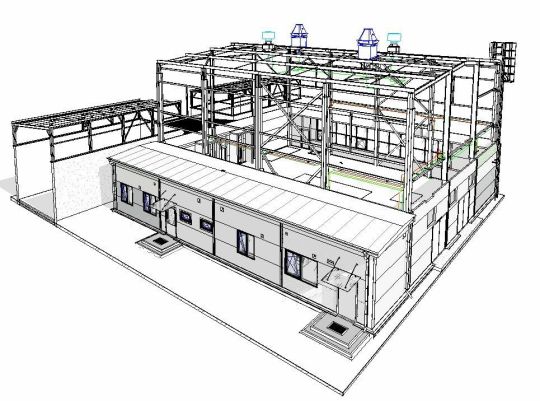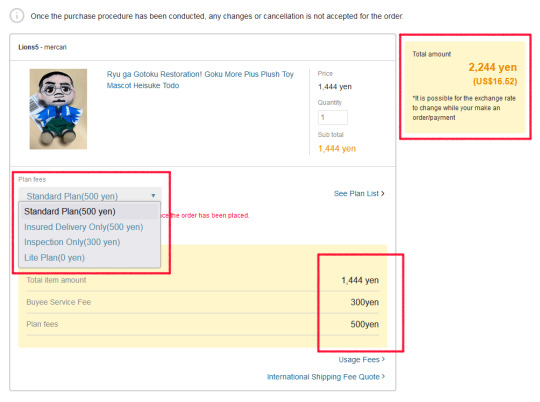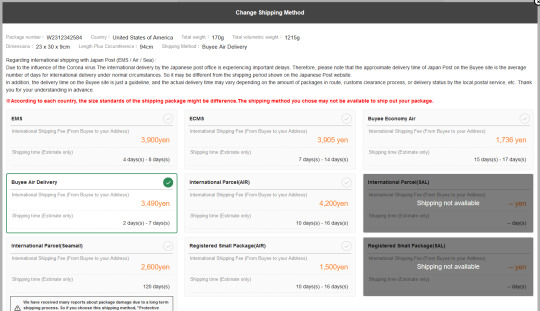#cost estimate accuracy
Explore tagged Tumblr posts
Text
Can a Cost Estimating Service Prevent Budget Overruns?
Budget overruns are a common challenge in construction and development projects, often leading to delays, reduced scope, or financial loss. A professional cost estimating service can play a vital role in minimizing these risks by providing accurate and comprehensive forecasts. This article explores how cost estimating services help prevent budget overruns and promote financial discipline.
Accurate Initial Budgeting
One of the first steps in preventing overruns is creating an accurate project budget. Cost estimating services analyze all components—materials, labor, equipment, permits, and contingencies—to develop a realistic financial plan. Having a clear budget aligned with project scope helps stakeholders set expectations and avoid underfunding.
Identifying Potential Risks
Experienced estimators assess project risks such as design changes, site conditions, and market fluctuations. By including contingency allowances, they provide financial buffers that cover unforeseen costs. This proactive risk management reduces surprises during construction.
Detailed Cost Breakdown
Providing a granular breakdown of costs by trade and task helps project managers monitor expenses throughout the build. This transparency enables early identification of cost deviations and timely corrective action, preventing minor overruns from escalating.
Regular Updates and Revisions
Construction projects evolve, and so should estimates. A cost estimating service updates budgets at key milestones or after significant changes. Keeping estimates current ensures the budget reflects the latest design, material costs, and market conditions, reducing the likelihood of overruns.
Supporting Change Management
Change orders can significantly impact budgets. Cost estimators evaluate and price these changes promptly, allowing informed decisions on scope adjustments. This control over changes maintains budget integrity.
Improving Communication
Clear cost reporting improves communication among owners, contractors, and subcontractors. When all parties understand the financial framework, collaboration improves, and disputes over costs decrease.
Leveraging Technology
Modern cost estimating services use software tools that integrate cost data with project management systems. These technologies enable real-time budget tracking and forecasting, helping teams stay on top of costs.
FAQs
Can a cost estimating service eliminate budget overruns completely? While it reduces risk significantly, unforeseen factors mean overruns can still occur.
How often should cost estimates be reviewed? Estimates should be reviewed regularly, especially after design changes or market shifts.
Do cost estimators help with negotiating change orders? Yes, they provide detailed pricing that supports fair negotiations.
Is contingency the same as a budget overrun? No, contingency is planned within the budget to cover uncertainties and should not be considered overruns.
Conclusion
A professional cost estimating service is a powerful tool for preventing budget overruns by offering accurate budgeting, risk assessment, and ongoing financial control. While it cannot guarantee zero overruns, its systematic approach provides the best chance to keep projects on budget and on track.
#why cost estimating prevents overruns#cost estimating and budget control#accurate project budgeting#risk management in cost estimating#contingency planning importance#cost estimating updates#managing change orders#improving project communication#technology in cost estimating#budget tracking software#preventing construction overruns#financial control in projects#cost estimating FAQs#construction budget risks#cost estimate revisions#cost estimating for project managers#project budgeting tips#cost estimating service benefits#avoiding project cost overruns#cost estimate accuracy#change order cost control#construction finance management#cost estimating best practices#cost estimate and scope changes#contractor budgeting tips#project cost monitoring#construction estimating tools#cost estimating and project success#cost estimating and risk mitigation#reducing project financial risk
0 notes
Text
Discover how PEJA Surveying's Bill of Quantities services can enhance your construction project's efficiency. Our meticulously prepared BoQs ensure accurate cost management and effective tender processes, facilitating better budget control and competitive bidding. With our expert services, we provide comprehensive support throughout your project's lifecycle, helping you maintain quality and cost-effectiveness. Contact us today to benefit from our professional quantity surveying expertise.
#bill of quantities#construction cost management#PEJA Surveying#tender accuracy#construction bidding#project efficiency#cost estimation#quantity surveying#construction management
0 notes
Text
Exploring the Diverse Landscape of BIM Software in Construction: A Comprehensive Guide
Introduction: In the ever-evolving field of construction, Building Information Modeling (BIM) has emerged as a transformative technology that revolutionizes the way buildings are designed, constructed, and managed. BIM software plays a pivotal role in enhancing collaboration, improving efficiency, and minimizing errors throughout the construction process. This article delves into the various…

View On WordPress
#architectural design software#as-built documentation#BIM model accuracy#BIM software#Building Information Modeling#collaboration platforms#construction industry advancements#construction management software#construction project efficiency#Construction Technology#cost estimation tools#facility maintenance optimization#facility management solutions#laser scanning technology#LiDAR applications#MEP systems modeling#point cloud integration#project stakeholders collaboration#real-time coordination#structural engineering tools#sustainable building practices
0 notes
Text
interesting soundbites you might've missed from the op81 & howie games podcast in melb
(did this while procrastinating at work... we are so back i guess.)
youtube
disclaimers: (i) i'm paraphrasing here so can't vouch for 100% accuracy, but as much as possible have tried to capture the meaning (ii) the word association game and the carcar soundbite have already made the rounds, but, i feel like, there was a lot more in this interview.
let's go!
on the topic of personal chefs and nutrition etc: host mark howard asks if the menu changes or there's anything special that oscar requests that reminds him of home -- apparently race week thursdays for a while were "chicken parm thursdays" and they might bring this back
oscar's lunch on press day was barramundi and "the big grained couscous with no spices" (oscar... the 1/16th is crying out for help)
one of the reasons he renewed with mclaren is because he felt the infrastructure and people needed to get to the championship in the new set of regs was there, so he was confident
on the reported $22mn bonus last year: oscar denies that it was this high (lol ok sir)
on longevity of career and responsibility: oscar talks about the estimated career in f1 usually being up to 35, maybe into your 40s but "it isn't like a typical career where you've got until your 60s" so financial investing and doing something with your salary to prolong the usability of it is important (wow 20something multimillionaire thinks of his pension. mature)
on the early RC cars: "i drove one around the school [cricket] oval a few times and that got me in trouble" pLeaSe !!!
recounting his first race at oakleigh (he was about... 9? 10?): "i went to a friend's birthday at the bmx track and did the last jump of the day before we went for the race. and i skidded down the down ramp on my face, so i actually missed it" HE REALLY WAS JUST SOME KID
so his real first race was a state race (with a P/provisional drivers' plate) HAHAHAH. he fought his way about half way up the pack in this one
"my first win... i won a club race at oakleigh and it felt like a world championship at the time. and then i quickly realised no one cared" <- once again devastated by his deadpan humour
on aus footie: "i was good in the under 9s cus i was pretty big as a kid up till that point and then everyone else grew and i didn't, then quickly realised i wouldn't become a footballer no matter how much i wanted it. i was playing footie a lot before i started racing and [the demands of racing then] really took up a whole season"
he also fielded in cricket at state level (?) a couple of times here and there. [i don't understand cricket terminology fully so i might be wrong here]
he was starstruck when meeting jackie stewart and alain prost because it was "pretty special, pretty cool. to meet legends of the sport like that."
he downplays the question about whether it was hard to move to boarding school, because he wanted to become a professional racing driver so badly and was always really motivated by this.
but does say formula renault was hard because of everything he felt he had to balance that year, and when things were not going well it feels very pressurised especially when you have only a year to prove yourself
on sponsorship and racing: "i'm fortunate to have a family that are pretty well off and it didn't become apparent until i entered f2 [that it was a big financial strain]. it costs about three million AUD a year [to fund a year in that series]"
credits both his parents for the sacrifices they made to support his racing career and shouts out his mum for making sure his sisters had the same opportunities to pursue their dreams as well
about the alpine purgatory years: "that was a tough thing because not everyone knows the full story and we weren't able to tell it. it was not an easy thing to go through but once i cemented my future and signed with mclaren, it was a relief to know i was going to be on the grid for at least a little bit"
to put the current margins on the cars into perspective: "the amount of difference between me and the car in front is the time it takes to blink".
and on car development being so advanced now: "there being something like a second between first car and last on the grid in qualifying is pretty unprecedented"
does he watch drive to survive seasons? "to be honest not really. i just skim through and see my parts to see if they've painted me as a supervillain. [this year's] is pretty balanced i would say. the mclaren episode is a pretty fair reflection of two competitive guys wanting to win races and it being a difficult situation for the team. it's entertaining but that one is for the most part pretty accurate. i found it quite entertaining."
during the drivers' word association part: "i don't have much for Stroll" FLKJKFJSDKLJSDK he really went *mariah carey voice* i don't know her
race weeks are scheduled down the minute, and on off weeks it's usually training every day at least once or twice a day; they get maybe 2-3 days at home. last year he reckons he spent 100 days at home in monaco last year, and was on at least 48-60 flights for work depending if you count the ones going to and from the MTC
howie told him to share his airline points (ha) and oscar said "qantas is the one airline i don't have platinum status at the moment [though] i used to when i lived in aus"
oscar does not own a boat in monaco (YET)
finds life in monaco a little bit of an adjustment due to the smaller spaces, but he's been in apartments even since boarding school so it's not a big deal to him. "i'm going to sound like a complete wanker if i complain about living in monaco"
on communication style on the radio, it's kind of about personal preference and he doesn't cast judgment on that – "some people need to be fired up, some people need to be calm and for me it's staying calm. in baku you can see from the onboard and my helmet i got pretty excited but i don't always open the radio for that"
howie closes with any advice for kids. oscar says: "enjoy it. for me, even – we've spoken about how difficult it is being in f1 and how cutthroat – [it's] always taking a conscious moment to reflect that you're doing a thing you love. doing it because you love it is the first thing. that's an important one for me even though there's so much more pressure now than when i started my first race at oakleigh. the second part is always be trying to learn, and improving. it's often easy when you have success early on, you think you're at that [certain] level now. but on my journey i've learned what's good 12 months ago isn't going to be good enough in 12 months time. that's in the car too. if we raced last year's car this year we'd probably be last. continuing to learn and improve is a part i enjoy as well."
#oscar piastri#op81#lore drop#he's such a hardworking nerd <3#from a technical perspective btw this interview was outstanding#everything down to the structure of the questions to the editing to how they kept to time and asked everythihng#and the authenticity of acknowledging soph / PR off camera and making everyone laugh#and using melbourne both as setting and framing to tell a story about oscar as a sportsperson#*chef's kiss*#as another side note ojp always seems to give the best interviews in a podcast format where he's comfortable#and so far it's looking like it's either going to be with mark howard or the fast & the curious pods so. ones to keep an eye on as oscarina
129 notes
·
View notes
Text
Spinner’s End Wasn’t Poverty—It Was Privacy
📌 Disclaimer: This analysis is based on publicly available information about historical UK tax structures and property trends. While every effort has been made to maintain accuracy and respectful tone, this is a speculative piece. I am not a UK resident or financial advisor—just someone deeply interested in the finer details of fictional worlds.
— A Breakdown of Severus Snape’s Finances, Property, and Survival Strategy. Poverty. It’s a word that lingers around Severus Snape like smoke. But what does it really mean?
He wasn’t wandering. He wasn’t destitute. He had a house. He had a salary. He had control.
After returning to Hogwarts, he lived with the kind of restraint that wasn’t born of lack—but of choice. And when viewed through the lens of property, taxation, and cost of living, the story shifts.
This wasn’t poverty. It was curation. Containment. Privacy, not pity.
And if there’s one thing I’ve learned about Severus Snape—it’s that the quiet spaces hold more truth than the loud ones.
—

📍 Where is Spinner’s End?
While J.K. Rowling never names the exact town, the description paints a clear picture:
A Northern, industrial town
Situated near a canal or polluted river
Likely somewhere in Lancashire or Yorkshire—the post-industrial belt of England
Rows of soot-stained brick houses, smokestacks, and the ghost of mills long shut
It’s never placed on a map, but the setting suggests a fictional stand-in for towns like Rochdale or Oldham—places shaped by coal, textiles, and decline. The kind of town where property is cheap, the windows stay shut, and ambition feels like an imported luxury. —
💷 What Would Inheriting That House Cost Him? Let’s assume Severus Snape inherited Spinner’s End—likely after his parents’ passing, sometime before 1981—making him the sole owner.
1.) 🧾 Inheritance Tax (UK Rules – 1980s Context)
Inheritance tax in the UK is a one-time tax, applied when someone inherits an estate above a certain value.
Threshold: £325,000
Rate: 40% on anything above that
However, family homes passed to direct heirs—such as a child—often qualify for relief or exemption.
If Spinner’s End was modestly valued at around £90,000–£150,000 in 1980s money, Severus likely paid little to no inheritance tax. Especially as an only child with no competing claims.
✔️ Inheritance tax = minimal, if anything
2.) 🏡 Council Tax & Maintenance (Ongoing Annual Costs)
Unlike inheritance tax, council tax is paid annually for as long as one owns the property.
Assuming 1980s–1990s North England housing:
Council Tax Band (likely A or B): £600–£800/year (adjusted to 1990s rates)
Utilities + minor upkeep on an ageing home: £1,000–£1,500/year (conservative estimate)
🧮 Estimated Annual Cost to Maintain Spinner’s End: £1,600–£2,300/year, give or take —
🧪 Would His Hogwarts Salary Cover That?
Let’s be realistic—and a touch precise.
💼 Hogwarts Salary (Potions Master, 1990s): Canon gives us no numbers, but Slughorn calls it “meagre.” This estimate is based on two sources:
Slughorn’s complaint in canon, suggesting the position isn’t highly paid
Real-world UK academic pay scales in the 1990s, particularly for lower-tier university lecturers or independent school masters, which hovered between £25,000–£35,000/year when adjusted for inflation
Even at the low end, that puts him in the lower-middle income bracket, especially considering:
✔️ Room & board at Hogwarts likely included ✔️ No daily expenses if he rarely stayed at Spinner’s End ✔️ Private potion commissions were almost certainly a thing
So yes—he could more than afford the property. He didn’t live lavishly. He lived strategically. Possibly keeping the house for legal ownership, privacy, or… brewing.
🖤 Realistic Summary:
Spinner’s End likely sits in the post-industrial North, quietly inherited in full
No inheritance tax, or very little
Ongoing maintenance: ~£2,000/year
Hogwarts salary easily covers it—especially for someone who brewed off-record
Modest? Yes. Poor? Absolutely not. It was never about luxury. It was about control. —
📊 Adjusting for 2025 (Currency Context)
To understand what those figures would mean today:
£1 in 1995 ≈ £2.20 in 2025, accounting for inflation
£1 GBP ≈ $1.25 USD (rounded average exchange)
So if Severus spent ~£2,000/year to maintain Spinner’s End in the 1990s, that’s about:
£4,400/year in today’s money
≈ $5,500 USD/year, for upkeep alone
—
Related post: The Rise of Severus Snape (Part III)—The Years Unspoken; Finances & Survival
#severus snape#snape meta#spinner's end#snape analysis#slytherin#hogwarts professor#harry potter meta#hp meta#fanned and flawless#pro snape#snape fandom#pro severus snape#professor snape#snape community#Snape Character Study#snape#hp fandom#rise of severus snape series
87 notes
·
View notes
Text
Ilana Berger at MMFA:
As President Donald Trump’s administration orders mass layoffs and cuts to the National Oceanic and Atmospheric Administration, local meteorologists and influencer storm chasers — including some weather experts who previously claimed to avoid politics or expressed right-leaning views — are speaking out in support of federal employees and the essential information provided by the agency.
Trump’s funding cuts and layoffs will hobble NOAA and the National Weather Service, potentially restricting access to a vital public good that costs taxpayers very little
NOAA and its subsidiaries, including the National Weather Service, employ thousands of scientists, engineers, and other experts to conduct vital research that is shared with the public. NOAA’s products and services range “from daily weather forecasts, severe storm warnings, and climate monitoring to fisheries management, coastal restoration and supporting marine commerce.” The NWS estimates that the critical information it provides costs just $4 per U.S. resident per year. [National Oceanic and Atmospheric Administration, accessed 3/14/25; The New York Times, 2/8/25]
Project 2025 — the right-wing plan for a second Trump administration organized by The Heritage Foundation with over 100 conservative partner organizations — called for NOAA to be “broken up and downsized” and urged the National Weather Service to “fully commercialize its forecasting operations.” Weather experts across the country have expressed alarm at Project 2025’s plans to dismantle NOAA under the new administration. Project 2025 architect Russell Vought, who now heads Trump’s Office of Management and Budget, has promised, “We want the bureaucrats to be traumatically affected.” [Media Matters, 5/31/24, 9/27/24, 2/28/25; ProPublica, 10/28/24]
Starting on February 27, the Trump administration has laid off more than 800 NOAA employees, plus another 500 who resigned if the agency promised to pay them through September. According to The New York Times, “The two rounds of departures together represent about 10 percent of NOAA’s roughly 13,000 employees.” On March 12, NOAA announced in an email to its staffers that the agency would be laying off another 1,029 employees, or roughly 10% of the agency’s remaining workforce. [The New York Times, 2/27/25, 2/28/25]
The Associated Press: “After this upcoming round of cuts, NOAA will have eliminated about one out of four jobs since President Donald Trump took office in January.” “This is not government efficiency,” said former NOAA Administrator Rick Spinrad. “It is the first steps toward eradication. There is no way to make these kinds of cuts without removing or strongly compromising mission capabilities.” [The Associated Press, 3/12/25]
The NWS’ National Hurricane Center has made great strides in tracking dangerous storms, but Trump’s layoffs are threatening that progress. A February preview of a report from the National Hurricane Center concluded that for the first time, the center managed to “explicitly forecast a system that was not yet a tropical cyclone (pre-Helene potential tropical cyclone) to become a 100-kt (115 mph) major hurricane within 72 hours.” However, experts fear that funding cuts and layoffs at NOAA’s Office of Aircraft Operations will impact the ability of the agency’s specialized “Hurricane Hunters” to collect data used for tracking and predicting destructive storms. [National Hurricane Center, 2/24/25; Yale Climate Connections, 3/6/25]
Meteorologists and storm chasers of all political persuasions issue dire warnings that the Project 2025/DOGE-inspired cuts to the NOAA and the NWS threaten public safety and forecast accuracy.
#Extreme Weather#Severe Weather#Storm Chasing#NOAA#NWS#Project 2025#DOGE#National Hurricane Center#Reed Timmer#James Spann#Chris Martz#Janice Dean
91 notes
·
View notes
Text

Sign of the Day - Boston again… another great overpass banner sign there….
* * * * *
LETTERS FROM AN AMERICAN
June 4, 2025
Heather Cox Richardson
Jun 04, 2025
Just hours after President Donald J. Trump posted on social media yesterday that “[b]ecause of Tariffs, our Economy is BOOMING!” a new report from the Organization for Economic Cooperation and Development (OECD) said the opposite. Founded in 1961, the OECD is a forum in which 38 market-based democracies cooperate to promote sustainable economic growth.
The OECD’s economic outlook reports that economic growth around the globe is slowing because of Trump’s trade war. It projects global growth slowing from 3.3% in 2024 to 2.9% in 2025 and 2026. That economic slowdown is concentrated primarily in the United States, Canada, Mexico, and China.
The OECD predicts that growth in the United States will decline from 2.8% in 2024 to 1.6% in 2025 and 1.5% in 2026.
The nonpartisan Congressional Budget Office (CBO) released two analyses today of Trump’s policies that add more detail to that report. The CBO’s estimate for the effect of Trump’s current tariffs—which are unlikely to stay as they are—is that they will raise inflation and slow economic growth as consumers bear their costs. The CBO says it is hard to anticipate how the tariffs will change purchasing behavior, but it estimates that the tariffs will reduce the deficit by $2.8 trillion over ten years.
Also today, the CBO’s analysis of the Republicans’ “One Big, Beautiful Bill” is that it will add $2.4 trillion to the deficit over the next decade because the $1.2 trillion in spending cuts in the measure do not fully offset the $3.7 trillion in tax cuts for the wealthy and corporations. Republicans have met this CBO score with attacks on the CBO, but its estimate is in keeping with those of a wide range of economists and think tanks.
Taken together, these studies illustrate how Trump’s economic policies are designed to transfer wealth from consumers to the wealthy and corporations. From 1981 to 2021, American policies moved $50 trillion from the bottom 90% of Americans to the top 1%. After Biden stopped that upward transfer, the Trump administration is restarting it again, on steroids.
Just how these policies are affecting Americans is no longer clear, though. Matt Grossman of the Wall Street Journal reported today that economists no longer trust the accuracy of the government’s inflation data. Officials from the Bureau of Labor Statistics, which compiles a huge monthly survey of employment and costs, told economists that staffing shortages and a hiring freeze have forced them to cut back on their research and use less precise methods for figuring out price changes. Grossman reports that the bureau has also cut back on the number of places where it collects data and that the administration has gotten rid of committees of external experts that worked to improve government statistics.
There is more than money at stake in the administration’s policies. The administration's gutting of the government seeks to decimate the modern government that regulates business, provides a basic social safety net, promotes infrastructure, and protects civil rights and to replace it with a government that permits a few wealthy men to rule.
The CBO score for the Republicans’ omnibus bill projects that if it is enacted, 16 million people will lose access to healthcare insurance over the next decade in what is essentially an assault on the Affordable Care Act, also known as Obamacare. The bill also dramatically cuts Supplemental Nutrition Assistance Plan (SNAP) benefits, clean energy credits, aid for student borrowers, benefits for federal workers, and consumer protection services, while requiring the sale of public natural resources.
These cuts continue those the administration has made since Trump took office, many of which fell under the hand of the “Department of Government Efficiency.” But, while billionaire Elon Musk was the figurehead for that group, it appears his main interest was in collecting data. His understudy, Office of Management and Budget director Russell Vought, appears to have determined the direction of the cuts, which did not save money so much as decimate the parts of the government that the authors of Project 2025 wanted to destroy.
Vought was a key author of Project 2025, whose aim is to disrupt and destroy the United States government in order to center a Christian, heteronormative, male-dominated family as the primary element of society. To do so, the plan calls for destroying the administrative state, withdrawing the United States from global affairs, and ending environmental and business regulations.
Yesterday the White House asked Congress to cancel $9.4 billion in already-appropriated spending that the Department of Government Efficiency identified as wasteful, a procedure known as “rescission.” Trump aides say the money funds programs that promote what they consider inappropriate ideologies, including public media networks PBS and NPR; the United States Agency for International Development (USAID), which provides food and basic medical care globally; and PEPFAR, the U.S. President's Emergency Plan for AIDS Relief that was established under President George W. Bush to combat HIV/AIDS in more than 50 countries and is currently credited with saving about 26 million lives.
Vought appeared today before the House Appropriations Committee, where members scolded him for neglecting to provide a budget for the year, which they need to do their jobs. But Vought had plenty to say about the things he is doing. According to ProPublica’s Andy Kroll, he claimed that under Biden “every agency became a tool of the Left.” He said the White House will continue to ask for rescissions, but also noted that, as Project 2025 laid out, he does not believe that the 1974 Impoundment Control Act, which requires the executive branch to spend the money that Congress has appropriated, is constitutional, despite court decisions saying it is.
Representative Rosa DeLauro (D-CT) told Vought: “Be honest, this is never about government efficiency. In fact, an efficient government, a government that capably serves the American people and proves good government is achievable is what you fear the most. You want a government so broken, so dysfunctional, so starved of resources, so full of incompetent political lackeys and bereft of experts and professionals that its departments and agencies cannot feasibly achieve the goals and the missions to which they are lawfully directed. Your goal is privatization, for the biggest companies to have unchecked power, for an economy that does not work for the middle class, for working and vulnerable families. You want the American people to have no one to turn to, but to the billionaires and the corporations this administration has put in charge. Waste, fraud, and abuse are not the targets of this administration. They are your primary objectives.”
The use of the government to impose evangelical beliefs on the country, even at the expense of lives, also appears to be an administration goal. Yesterday, the administration announced it is ending the Biden administration’s 2022 guidance to hospital emergency rooms that accept Medicare—which is virtually all of them—requiring that under the Emergency Medical Treatment and Active Labor Act they must perform an abortion in an emergency if the procedure is necessary to prevent a patient’s organ failure or severe hemorrhaging. The Emergency Medical Treatment and Active Labor Act requires emergency rooms to stabilize patients.
The Trump administration will no longer enforce that policy. Last year, an investigation by the Associated Press found that even when the Biden administration policy was being enforced, dozens of pregnant women, some of whom needed emergency abortions, were turned away from emergency rooms with advice to “let nature take its course.”
Finally tonight, in what seems likely to be an attempt to distract attention from the omnibus bill and all the controversy surrounding it, Trump banned Harvard from hosting foreign students. He also banned nationals from a dozen countries—Afghanistan, Chad, Republic of Congo, Equatorial Guinea, Eritrea, Haiti, Iran, Libya, Myanmar, Somalia, Sudan, and Yemen—from entering the United States, an echo of the travel ban of his first term that threw the country into chaos.
Trump justified his travel ban by citing the attack Sunday in Boulder, Colorado, on peaceful demonstrators marching to support Israeli hostages in Gaza. An Egyptian national who had overstayed a tourist visa hurled Molotov cocktails at the marchers, injuring 15 people.
Egypt is not on the list of countries whose nationals Trump has banned from the United States.
LETTERS FROM AN AMERICAN
HEATHER COX RICHARDSON
#Letters From An American#Heather Cox Richardson#Travel Bans#Project 2025#economic news#CBO#deficit#delusional#Vought
30 notes
·
View notes
Text
Let us not forget what this is truly about. Tax cuts for the rich. A tax structure specifically designed to award over 80% of the tax breaks to the top tax bracket, while slightly raising taxes for those making between $60-$80k. Yet hallelujah those with more money than they could ever spend will increase their disproportionate wealth by tens of millions of dollars a year by not contributing to the wellbeing of the American system. As Republicans have so clearly demonstrated, the only people who deserve wealth, are those who already possess it.
There’s some fun math in this article. Math I guess Republicans either believe we’re too stupid, lazy, or distracted to catch. To pass this “budget” they will raise the debt ceiling by $4 trillion. The tax cuts for the rich that trump and his billionaire cabinet so desperately want to renew will cost $4.5 trillion, once again leaving a MASSIVE deficit to pay.
In trumps first term he added nearly $8 TRILLION to the deficit, exponentially more than any other president in American history, and 25% of the OVERALL, meaning all time total, debt accrued.
“Don’t worry Eugene, doge is on it!”
Well, I wouldn’t get too far ahead of ourselves on that.
As of Friday, February 21st, musk and his dougebags found $7.8 billion in waste/fraud. That may sound like a lot, yet in the full scheme of the budget, it isn’t.
There are roughly 365 million American citizens. Trump is touting this notion that with all the “savings” from musk and the dougebags he will give 20% of the findings back to the American taxpayer.
Let’s do some long division. 7.8 billion divided by 365 million comes out to be 21.73. Now take 20% of that and it’s just over $4 per person. Personally I’d take a functional government over $5. Maybe that’s just me though.
The juice ain’t worth the squeeze with this South African billionaire dismantling and infiltrating all corners of our institutions.
Doge is so incompetent that they boasted finding $8 billion dollars in suspected fraud, only to have that redacted due to a calculation error of THREE DECIMAL POINTS!!!
There’s also claims from the foreigner trying to destroy our democracy of hundreds of thousands of social security beneficiaries receiving checks despite being 150 plus years old. As it turns out, if you did a simple google search this is false. The code for the Social Security Administration is tremendously old but efficient. To ensure non duplicate SS numbers plus the cost and chaos it would create to rewrite the code, the current system was decided to be satisfactory seeing its accuracy and functionality.
Let’s recap. To cut taxes for the rich, there will be the largest cut to Medicare and Medicaid since its inception, estimates are at least $800 billion, hopefully nobody’s grandparents need medical care, funding for the most impoverished people on the planet is eliminated, despite it being less than 1% of the budget, the department of education will be defunded or all together dissolved, nutritional assistance to the struggling American will be DRASTICALLY cut, for some reason the Consumer Financial Protection Bureau will be annihilated, grants that fund cancer research and other medical breakthroughs will cease, infrastructure projects will come to a halt leaving our roads and bridges in tatters, and millions of career civil servants tasked with everything from ensuring aviation safety, to securing our nuclear arsenal will find themselves without work.
All this so musk, Trump, Thiel, and the 12 other billionaires in trumps cabinet can avoid contributing their fair share to the country they made their fortunes off of.
Trump recently spouted some dumb sh*t, as he often does, while referencing tariffs saying “we were the richest between 1887 to 1920” which, number one, is false, and two, THATS THE PERIOD KNOWN AS THE GUILDED AGE, AN ERA OF IMMENSE WEALTH DISPARITY THAT LED TO THE GOD DAMN GREAT DEPRESSION!!!!!
So what are Republican principles exactly? It’s certainly not law and order, taking into account their almighty leader’s antics and his administrations disdain for the Constitution and the law generally. It’s definitely not family values when you take into consideration all the sexual predators, the infidelity and sexual misconduct. It’s clearly not democracy and freedom with this administration’s stance on Russia removing us from the allies we have been aligned with since WWII, and siding us with Putin and dictatorships around the globe. And as this upcoming “budget” shows us fiscal responsibility is out of the question.
The values the modern Republican Party holds is that of enriching the wealthy by screwing the middle class. They stand for tyranny and oppression. Corruption is a cornerstone to the Republican ideology. Let’s not forget voter suppression. There’s always their tried and “true” platform of blatant lying, their spreading of misinformation and disinformation, so much so that they openly oppose fact checking. Their aversion to the Constitution. Last but not least, their embrace of discrimination.
It sucks that everyone will have to suffer to hopefully enlighten Republican voters on the fact that they care nothing for the working class, that they have zero shame in their hypocrisy and self enrichment. That they only desire power and will engage in any disgraceful tactics to hold on to it. That they hold no reverence to their constituents or to the oath they swear to the Constitution.
May our nation endure this devastating and corrupt period of its existence.
#budget#trump is a threat to democracy#reconciliation#traitor trump#donald trump#republicans#democracy#politics#the left#freedom#free speech#political corruption#common sense#immigration raids#no kings#impeach trump#elon musk#spacex#president trump#doge#elon’s doge boys#fraud#gop#gop hypocrisy#liberal tears#taxes#americans#America#u.s. house of representatives#democrats
68 notes
·
View notes
Text
alright since RGG seems bent on putting merch behind things like UFO catcher shit, here's my crappy how to use a proxy guide lol

gonna be using buyee as an example but most proxies are more or less the same so it's your choice on what to use. I look at fee prices and customer service reviews to decide on my proxies. sorry if it's wordy! but I think I cover the most important bits for general use.

so on the landing page you got all the goobly gook but what you'll mainly be looking at is the stuff in the red box. all the shops are listed there - the ones I mainly use are yahoo! japan auctions and mercari. the other shops are more like regular shopping sites. pretty much all proxies use the same sites as they're just a directory for wherever you wanna shop.
auctions are self explanatory - you bid on things till the time runs out or some auctions offer an immediate buyout price.
mercari is largely a secondhand seller marketplace but you can find companies on there as well.

when I search for stuff, I prefer putting in the actual terms for better accuracy over auto translating. so here I put in ryu ga gotoku (龍が如く). on buyee, I have rgg and dead souls as saved searches so I can just click on them to easily autofill the search bar which is handy.

items will populate and you'll see prices in yen and for me, usd. these are the *listing prices, not the *final price. since I'm using a proxy, there will be additional fees per item I get. also, the currency exchange rate occasionally changes so if something goes up or down in price, that be why.
💥 pls also note prohibited items that proxies cannot ship internationally such as items with flammable fluid which can include perfumes, lighters, etc. other things like alcohol, which may be okay for like 99% of countries is not okay, for example, in the US lol unless you go thru customs paperwork n shit. *ebay is usually where you want to go for prohibited items as those sellers *will go thru the process of filing the proper forms to send such items.
💥 pls be aware of scalpers! I tend to browse multiple pages and multiple listings of the same item to see what the prices typically fall around. if it looks too cheap, be aware of an item's description. if it looks too expensive, it probably is.

let's use this bad boy as an example. the main things you wanna look at on any item is the condition and the photos to be *sure* you are happy with what you're getting. if you see the same photos across listings, be a lil wary. you can see estimated shipping times and the seller's general ratings. always read item explanations if there is one in case the seller makes any notes of defects or other things.
you can add to shopping cart to keep browsing or you can go to the order page to immediately purchase.

so proxies typically have different plans you can choose when you buy items and that adds towards the fees. these can include inspections, insurance, etc of items when they arrive at the proxy warehouse (see your proxy's FAQ for plan descriptions). it's up to you what you deem worth choosing, if at all. for most things, I just go with whatever costs me 0 lol - especially if it's a cheaper item that I really don't feel needs to be inspected or insured, like a plushie or keychain. regardless of plan, you'll have to pay some proxy service fee (here the "buyee service fee"). in the top right, you'll see the total cost of everything. once you're happy, then you pick your form of payment. I usually go with paypal.

you can go to your page and see typical stuff like orders, settings, and the like. there's often specific tabs for certain sites like auctions so you can go there for anything you purchase in that way. the cart is anything you've added but haven't bought.
the orders tab is for anything bought and you may see the status of its shipping to the proxy warehouse which I'll get to in the next bit.
package information is everything that has arrived to the warehouse so here you can see I have 12 items currently waiting to be shipped to me.
user information, pretty basic but do MAKE SURE your addresses and things are 100% correct. it would really suck nuts if you pay out the ass for international shipping and it gets sent to the wrong place.

on the orders tab, you can see the status of the item. it contains important bits like date ordered and order # (I've blotted out mine). order received is *you* paying for the order. order completed is *buyee* paying for the order. shipped means the seller has shipped to buyee's warehouse address and arrived at warehouse is self explanatory.
*sometimes, a seller may cancel an order after you've paid for it and you will be refunded. this is often due to the seller unable to actually send the item for whatever reason or they don't sell to proxies. nothing you can really do about it but I've only had it happen a couple of times in dozens of purchases.

back to the package information tab, here you can see all the packages that have arrived at the warehouse waiting for shipment. proxies will store packages for free for a certain number of days - buyee being 30 while I've seen other go to 45 days, etc. after that time is up, you will be charged for storage per day so be aware of that!
here you can consolidate packages which means putting everything into one shipment instead of going individually. you can see estimated costs of shipping per item which, if you did each item individually, that would be mad expensive. when you consolidate, things can still be pretty pricey but imo better to pay idk 150 bucks in shipping for 10 items instead of 300 bucks for all 10 individually.
💥 shipping is calculated by weight so be aware of that when you buy items - however baseline costs will be the same for lighter items regardless of how much they weigh. baseline costs for me is around 15-30 bucks regardless of what I get. for example, I have a teeny tiny keychain in storage and several figures. the shipping for that keychain is the same cost as the figures so it's only sensible to lump them into one package cuz I ain't paying out the ass to ship 1 keychain lol.
you are free to consolidate what you want and how. if you wanna consolidate some packages to ship now and you wanna do others later, you are free to. just keep in mind your budget and storage time!
proxies also offer services to protectively wrap your packages. if you're concerned about damage, then choose that option when you consolidate. I don't often do it unless what I'm buying can break otherwise all my packages have arrived relatively unharmed.
💥 proxies will consolidate things AS IS so if you have a buncha figures that don't have their boxes, the proxy will put them in a shipping box just as they are, however they received them from the seller. so if the seller only bubble wrapped the figure, it will be sent to you just like that, no additional protection unless you pay for that option.
*consolidation can take some days and you'll be informed when items are ready to ship. at that point, you pay the shipping and that's it! you can choose what type of shipping you wanna go with (such as DHL, EMS, sea mail (if it's available), etc at differing prices and arrival times. pick what's best for you. *note, sea mail is often the cheapest but the slowest (like several months arrival time) and not available to every country (plus you'd want protective packaging for this just in case cuz boat rides be bumpy)

here are some examples of shipping costs for a single one of my items. some of these options will disappear when I consolidate cuz shipping a lil figure is very different from shipping a larger box full of multiple things.
💥 be sure to read EVERYTHING and make sure you know what options you're choosing to make sure it fits your budget and expectations of arrival time.

one more thing proxies can do is order from a number of sites that aren't on the main page. for buyee, you want to go to the other sites information tab and then click "purchase request for other sites."

here you can input the information of whatever site you want to see if the proxy can purchase it for you. this is how I buy things on ebten like the jpn only preorders. if the proxy cannot buy the requested item, they'll let you know.
if they can go thru with the order, they will confirm your payment and it goes thru the same process as any other order.
258 notes
·
View notes
Text

Summary that was posted on social media:
1) Here it is, our overview of the most interesting ME/CFS studies of 2024. If you think we’re missing an important one, feel free to post it as a comment below
https://mecfsskeptic.com/2024-looking-back-on-a-year-of-me-cfs-research
2) A recent preprint used data from the UK Biobank and showed that there are many differences in the blood between ME/CFS patients and controls. Their analysis suggests that these differences are not due to inactivity or deconditioning.
3) The Intramural NIH study did the most extensive set of biological measurements ever conducted in ME/CFS patients but because of the low sample size (n = 17) and focus on ‘effort preference’ it has mostly led to disappointment.
4) The MCAM study recruited patients from 7 ME/CFS specialty clinics and assessed cognitive functioning in more than 200 patients. Accuracy was relatively normal but information processing speed was significantly lower in patients versus controls.
5) This year, the largest study on repeated cardiopulmonary exercise testing in ME/CFS was published. Although there were small to moderate effects, there was a large overlap between patients and controls. It is unclear if this procedure can be used as a diagnostic test.
6) 2024 also saw two big rehabilitation trials for children with ME/CFS: MAGENTA and FITNET-NHS. Both had null results suggesting that GET and online CBT (FITNET) are unlikely to be cost-effective.
7) We also had a new prevalence estimate using statistics data for NHS Hospitals in England. Extrapolating the highest rates to the entire UK would mean that 390.000 people (0.585%) get ME/CFS in their lifetime.
A Norwegian study showed how wages dropped dramatically and sickness benefits increased before and after an ME/CFS diagnosis.
9) Honourable mention: following the tragic death of Maeve Boothby O’Neill, Prof. Emeritus Jonathan Edwards wrote a paper on managing nutritional failure in people with severe ME/CFS, including suggestions that can supplement the NICE Guideline.
====== comment: Another excellent blog from this account. Note that the social media summary only highlights a few of the many studies that are discussed in the post. Saying that, I didn’t find it overly long either. Highly recommended.
45 notes
·
View notes
Text
AS Estimation & Consultants | The Cost Estimating Service That Keeps Your Project on Budget

Staying within budget is one of the biggest challenges in any construction project. Unexpected expenses, material price changes, and scope creep can all contribute to costly overruns. At AS Estimation & Consultants, our cost estimating service is designed to give you the clarity and control you need from day one.
We go beyond simple calculations. Our expert estimators provide detailed breakdowns that include labor, materials, equipment, contingencies, and even market-based cost fluctuations. Whether you’re a builder, developer, or homeowner, our service ensures your financial expectations align with your design plans. We identify risks early, prepare for alternatives, and help you make smarter decisions before construction begins.
By offering both quantity takeoff and complete cost estimating, we ensure nothing is missed. Our estimates are based on current data, historical trends, and industry standards—giving you a reliable foundation for planning and execution.
With AS Estimation & Consultants, you don’t just get a number—you get peace of mind. Let our cost estimating service help you avoid budget surprises and deliver your project with confidence.
AS Estimation and Consultants
6/32 LAW VIC 3020, AUS
(61) 488874145
https://asestimation.com/
#how to avoid budget overruns in construction#cost estimating service for builders#residential project cost planning#AS Estimation & Consultants reviews#cost estimate accuracy#professional quantity takeoff service#detailed construction budget service#why cost estimation matters#cost estimating vs quantity takeoff#affordable estimating service Australia#construction project budgeting help#avoid surprise construction costs#estimating service for homeowners#renovation cost estimating experts#commercial cost estimating consultants#reliable cost estimators#construction estimate for investors#project cost forecasting service#construction budgeting tips#estimating service near me#construction cost control methods#material cost forecasting service#how to budget new builds#cost estimating support services#how to read a construction estimate#managing construction finances#design to cost construction service#estimating support for contractors#best estimating company Australia#estimating service for design-build projects
0 notes
Text
Relying on its own resources, Ukraine has just carried out what might be the most complex, elaborately planned, and cost-effective military operation of its current war with Russia. Yesterday, the Ukrainians used drones to attack, almost simultaneously, at least four Russian airfields separated by thousands of miles. Among them were two airfields just inside Russia, but the targets also included Olenya air base, above the Arctic Circle, and, remarkably, Belaya air base, in Siberia, which lies just over the border from Mongolia.
The attack showed how much audacity, ingenuity, and effectiveness the Ukrainians can bring to their own defense when Western leaders aren’t pressuring them to hold back. It also revealed the vulnerability of the large, expensive planes and other hardware treasured by major powers around the world.
Images circulating immediately after the attacks appeared to show that Russian aircraft had been hit with remarkable accuracy at some of their most vulnerable points. The Ukrainians seem to have placed relatively small drone swarms in cavities built into the top of trailer trucks. Then, when the trucks were close to the targets, the trailer roofs opened up, and the swarms of drones flew out, surprising and overwhelming Russian defenses. Even how the drones themselves were operated represents something notable. In many cases, they seem to have been flying courses preprogrammed via the open-source software ArduPilot, which has proved effective in navigating unmanned aerial vehicles for hundreds of miles and precisely reaching targets.
Although details remain limited, the operation testifies to how rapidly drone technology is evolving. Human operators might well have been observing some of yesterday’s flights and been in a position to take control if necessary, but some of the vehicles may have operated outside of human authority, flying preprogrammed courses. Ukrainian officials have said that some of the drones were basically AI-trained to recognize the most vulnerable parts of Russian aircraft and automatically home in on those areas.
The Ukrainians have claimed that more than 40 advanced Russian aircraft were hit and that at least 13 were destroyed. How much of the damage is reparable is not yet clear. Kyiv boasted of destroying more than a third of Russia’s large Tu-95 bombers, which have been a primary launch system for the large volleys of missiles that regularly strike Ukrainian cities. The Tu-95s are literally irreplaceable: Russia has no production facilities making more of these aircraft, and it has not yet designed a successor to the model. Yesterday’s attack also appears to have damaged a large number of Tu-22 M3 bombers and probably one A-50 command aircraft, the Russian equivalent of a U.S.-made airborne warning and control aircraft. The total cost of Russian losses likely runs into several billion dollars.
In contrast, the cost of one of the Ukrainian drones used in yesterday’s attack has been estimated at about $1,200—so that even if the airfields were attacked with 100 drones each (a seemingly high estimate), the total cost of the drones used would have been less than $1 million. I struggle to think of a recent military operation where one side suffered so much damage at so little cost to the other.
In one sense, the Ukrainian attack represents a culmination of what we have seen happen since Russia launched its full-scale invasion in 2022: Seemingly outmatched by Russia’s much larger military, Ukraine has used drones and other improvised equipment to destroy tanks, large warships, bombers, and other large legacy systems. Military planners and many outside commentators have been too slow to acknowledge the significance of Ukraine’s defensive tactics, but the most recent attacks plainly show the need for major changes in how all militaries are constructed and trained.
For the United States and other major Western militaries, Ukraine’s use of trucks parked outside secure areas near military sites will pose uncomfortable questions. How closely do they—or can they—monitor all the truck traffic that streams past their bases? Do they know what happens in every nearby property from which an adversary could hide drone swarms and then launch them with no warning? For many years now, for instance, Chinese interests have been buying large amounts of farmland right next to important U.S. military bases. They could be growing soybeans, but they could also be staging grounds for drone swarms that would make the Ukrainian attacks look minuscule.
Meanwhile, in Europe, military bases have in the past few years been regularly overflown by a large number of unknown drones, which are presumably gathering intelligence. Whichever power is responsible obviously has the ability to deploy a larger number of drones in kinetic attacks. The Ukrainians are showing U.S. and European militaries that better security against drone flights is long overdue.
For Ukraine’s doubters, these attacks should lead to a period of quiet reflection. President Donald Trump has insisted that Ukraine has “no cards.” The New York Times editorial board recently implied that Ukraine is unlikely to produce a military breakthrough that can change the basic course of the war. But pessimism about Ukraine’s capabilities is ahistorical and wrongheaded.
For three years, the Biden administration simultaneously supported Ukraine and discouraged major attacks on Russian soil, for fear of provoking Vladimir Putin too much. That constraint no longer exists, now that Trump has written off Ukraine and appears eager to end the war on Putin’s terms.
Until now, Ukraine has had only a limited ability to launch attacks as ambitious as the one it just executed. If Ukraine’s remaining allies help arm it properly to undertake similar operations at scale, it can still win the war.
17 notes
·
View notes
Text
Journey to the West Discord Art and Writing Competition
The Journey to the West discord is hosting an art and writing competition centering around Sun Wukong.
Prompt:
Multiversal mash up! - Have one or more of your favorite Monkey Kings interacting with other versions of himself.
These include the Wukong from the original JTTW novel or unofficial sequels, as well as movies, TV shows, video games, or even your OC Wukong.
Details:
Art and writing only
NSFW content is NOT permitted
The contest runs from October 1st to the 31st.
The 1st, 2nd, and 3rd place winners will be announced on November 3rd.
Criteria:
Art: structure, color palette, background, foreground, framing
Writing: structure, wording, grammar, character accuracy
Discord Judges:
greencicadarchivest
SaltyBeans
Six-Eared Macaque [Six/InkyPie]
Prizes:
I will be offering three statues from my personal collection. The 1st place winner gets to choose what statue they like best.
The first is a traditional religious idol carved from wood. It is roughly 40 cm tall. It is worth several hundred dollars.
The second is a new ceramic statue just shy of 36 cm.

The third is a vintage ceramic statue that is 35 cm.


Shipping:
The statues are free to the winners, but you must pay for the shipping. I will cover the initial cost.
The conservative estimate is $80 USD for shipping from Taiwan. But the actual cost might be lower given your location and if you don't mind a slower shipping method (i.e. by boat as opposed to plane). If you choose a faster method, then the cost obviously goes up.
Most importantly, you don't have to pay me back until after the statue arrives. And if you can't afford to pay the full cost all at once, you can divide it up into smaller payments. I don't want the shipping to scare off talented artists and writers.
Discord Link:
If you would like to join in on the fun, click here to join the server:
Please reblog this so others can learn about the contest.
#Sun Wukong#Monkey King#Journey to the West#JTTW#Lego Monkie Kid#LMK#discord#contest#art contest#writing contest#Please reblog
97 notes
·
View notes
Text

According to the latest publication from Meticulous Research®, the 3D sensing and imaging market (Mercato del rilevamento e dell'imaging 3D) is expected to reach $115.3 billion by 2030, at a CAGR of 24.2% during the forecast period 2023–2030. The growth of the 3D sensing & imaging market is driven by the rising demand for devices with 3D sensing capabilities, growing preference for VCSELs over LEDs, rising demand for ADAS, and growing use of 3D imaging sensors across industries. Moreover, rising demand for optical 3D sensing capabilities in industrial applications, increasing government initiatives supporting industrial automation, rising awareness regarding the benefits of 3D imaging technology in medical applications, and increasing integration of 3D accelerometers in smartphones and gaming consoles.
The 3D Sensing and Imaging Market Transforming Industries Through Technology The global market for 3D sensing and imaging technology is growing rapidly, with estimates suggesting it will reach $115.3 billion by 2030. This marks a significant compound annual growth rate of 24.2% between 2023 and 2030, showing how important this technology is becoming in many industries.
Driving Forces Behind Market Growth:
Several main factors are driving this market growth. The most important one is the rising demand for devices that have 3D sensing features. Consumers and businesses see the benefits of better spatial awareness and interaction. There's also a clear shift from traditional LEDs to Vertical-Cavity Surface-Emitting Lasers (VCSELs), which perform better for 3D sensing tasks.
The automotive sector is crucial too, as growing demand for Advanced Driver Assistance Systems (ADAS) pushes manufacturers to add advanced 3D imaging sensors. Beyond transportation, industries are using 3D imaging technology more for tasks, from quality control in manufacturing to precision medicine in healthcare.
The use of 3D accelerometers in smartphones and gaming consoles has sped up market growth, and industrial applications are gaining from better optical 3D sensing capabilities. Government initiatives promoting industrial automation and increased awareness of 3D imaging benefits in medical fields are other factors encouraging adoption.
Key Players
The key players operating in the 3D Sensing and imaging market (Marché de la détection et de l'imagerie 3D) are STMicroelectronics N.V. (Switzerland), Infineon Technologies AG (Germany), Microchip Technology Inc. (U.S.), Viavi Solutions Inc. (U.S.), Rockwell Automation, Inc. (U.S.), KEYENCE CORPORATION (Japan), Suteng Innovation Technology Co., Ltd. (China), Autodesk Inc. (U.S.), Cognex Corporation (U.S.), OMNIVISION Technologies, Inc. (U.S.), SICK AG (Germany), Panasonic Holdings Corporation (Japan), Sony Group Corporation (Japan), Lumentum Holdings Inc. (U.S.), FARO Technologies, Inc. (U.S.), Occipital, Inc. (U.S.), LMI Technologies Inc. (Canada) (A Subsidiary of TKH Group N.V.), Trimble Inc. (U.S.), and Balluff GmbH (Germany).
Market Challenges and Emerging Trends
Despite the positive outlook, the market faces some challenges. High installation costs are a big hurdle for many potential users, while the ongoing need to boost accuracy, effectiveness, and robustness of 3D sensing technologies presents technical problems for developers.
However, some promising trends are on the rise. The growing use of liquid lenses for better vision and the widespread adoption of Industry 4.0 technologies are opening new doors for 3D sensing and imaging solutions.
Technology Segments and Applications
The market includes two main categories: 3D sensing and 3D imaging. While 3D imaging currently has the larger market share due to greater adoption of cloud-based solutions and demand from the entertainment, construction, and archaeological sectors, 3D sensing is expected to grow the fastest.
Among various technologies, LiDAR leads the market, thanks to the rapid advancement of autonomous vehicles, increased use of drones, and the need for accurate geospatial solutions. Still, structured light technology is likely to see the highest growth rate during the forecast period.
Industry Applications and Geographic Distribution
Security and surveillance applications are currently the largest market segment, driven by the need for mobile surveillance solutions, deployment of 3D LiDAR cameras at remote locations, and growing demand for innovative outdoor security solutions. This segment is expected to continue having the highest growth rate.
Consumer electronics is another important segment, benefiting from the rising adoption of smartphones, increased camera usage, and the remote work trend that has led to higher laptop sales. However, the healthcare sector is expected to grow the fastest as medical professionals increasingly understand the advantages of 3D imaging technology.
Geographically, North America leads the market, propelled by high use of advanced technologies like face recognition, facial payments, and augmented reality solutions. The region’s focus on robotics and security applications for remote areas further enhances its position. Meanwhile, Asia-Pacific is set to experience the quickest growth, reflecting the region's increased tech adoption and manufacturing capabilities.
This dynamic market continues to change as new applications arise and existing technologies get better, making 3D sensing and imaging vital tools for future innovation.
Download Sample Report Here: https://www.meticulousresearch.com/download-sample-report/cp_id=5358
Key Questions Answered in the Report:
What is the current revenue generated by the certified organic agricultural inputs market globally?
At what rate is the certified organic agricultural inputs market demand projected to grow for the next 5–7 years?
What are the historical market sizes and growth rates of the certified organic agricultural inputs market?
Contact Us: Meticulous Research® Email- [email protected] Contact Sales- +1-646-781-8004 Connect with us on LinkedIn- https://www.linkedin.com/company/meticulous-research
#3DSensing#3DImaging#FacialRecognition#AR#VR#IndustrialAutomation#LiDAR#TimeOfFlight#DepthSensing#MachineVision#SmartDevices#MarketResearch#TechnologyTrends#MeticulousResearch#Forecast2031
2 notes
·
View notes
Text
Why Create Footprint Roofs in Revit?
Accurate Design Representation: Footprint roofs allow architects and designers to accurately represent the roof's shape and size in their building designs.
Precise Quantities and Cost Estimation: By creating a footprint roof, you can extract precise quantities of materials and estimate costs more accurately.
Better Visualization and Communication: Footprint roofs enable stakeholders to visualize the roof's design and layout, facilitating better communication and collaboration.
How to Create Footprint Roofs in Revit
Start with a Sketch: Create a sketch of the roof's footprint using lines, arcs, or curves.
Use the Roof by Footprint Tool: Access the "Roof by Footprint" tool in the "Architecture" tab.
Define the Roof's Properties: Specify the roof's slope, material, thickness, and other properties.
Refine the Design: Use Revit's editing tools to refine the roof's shape and layout.
Benefits of Footprint Roofs in Revit
Improved Accuracy: Footprint roofs ensure accurate representation of the roof's design and layout.
Increased Efficiency: Revit's footprint roof tool streamlines the design process, saving time and effort.
Enhanced Collaboration: Footprint roofs facilitate better communication and collaboration among stakeholders.
By creating footprint roofs in Revit, architects, designers, and builders can ensure accurate, efficient, and effective roof design and construction.
2 notes
·
View notes
Text
California’s top election official is drawing fire after claiming that counting votes faster would simply be too expensive.
Secretary of State Shirley Weber posted on social media this week that speeding up California’s famously slow ballot counting — especially for ballots arriving after Election Day — would cost counties a significant amount of money. “What would ‘faster vote counting’ actually cost?” she asked on X. “Faster counting doesn’t increase accuracy—it only makes it more costly.”
Weber cited one example in which a single county would have to expand to 950 polling places to accommodate quicker counting, with an estimated price tag of up to $110,000 per election.
The statement quickly drew criticism, with many pointing out that smaller and less wealthy states manage to report election results within hours — while California, with a nearly $3 trillion economy, regularly takes weeks to finalize its vote counts.
In 2024, some California counties took more than a month to certify final results, leaving voters frustrated and raising questions about the state’s election infrastructure.
2 notes
·
View notes